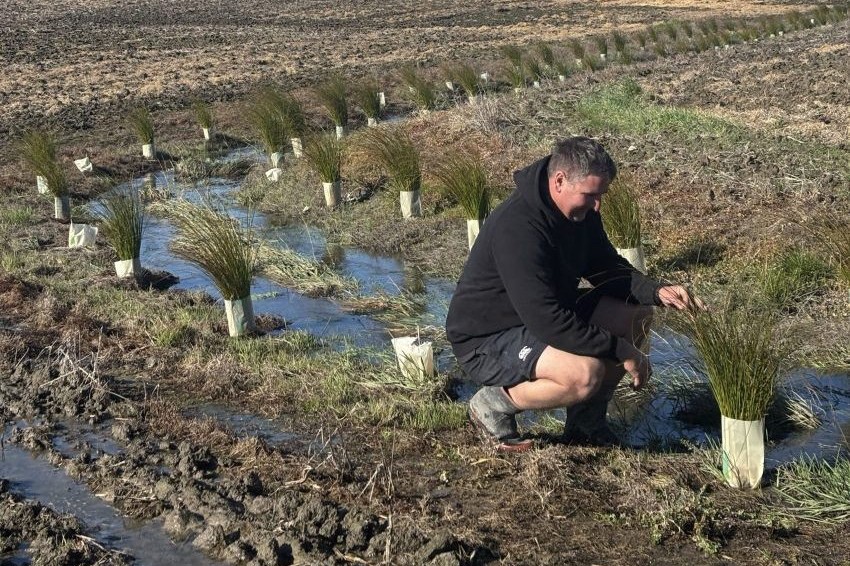Farmers of high country, especially pastoral lessees, have probably spent more time than most down-country farmers when it comes to planning the management of indigenous biodiversity and putting it on paper. Country-Wide writer Joanna Grigg reports on why other farmers could learn from them.
High country farmers step through the yard gate into a landscape with indigenous species underfoot and as the dominant visual backdrop.
They are experienced at dealing with regulations around indigenous biodiversity. The layers of regulations include having outstanding landscape planning definitions attached to land and a requirement to seek approval from the Crown for development on their farm. Then there are territorial level rules (council level) which require resource consent for certain land activities. Down-country farmers typically encounter just one layer of regulation.
And the layers are changing again. The Proposed Indigenous Biodiversity Strategy, open for submissions, will look to change and unify the territorial regulations that landholders work under.
Like many landowners, Philip Todhunter, Lake Heron Station, Canterbury, is still wading through the recently released fine print of the draft National Policy Statement for Indigenous Biodiversity.
He will be making a submission on behalf of the Todhunter’s farming and tourism businesses, and will have input into the submission from the High Country Accord, of which he is chairperson.
The High Country Accord represents a group of 462 pastoral lessees who hold perpetually renewable Crown leases.
On a personal level, Todhunter encourages farmers to make a submission and explain the biodiversity enhancement and protection work they currently do. He suggests that New Zealand needs farming in the high country and other areas, to both fund and carry out biodiversity work.
“There are also many areas where grazing and active farmer stewardship has been removed to the detriment of the environment.”
“Council and government budgets struggle to keep up with weeds and pests on their land; look at the willow, gorse and broom-choked lowland rivers as examples.”
He believes a profitable land-based enterprise is the best funder of weed and pest control, which is one of the keys to protecting indigenous biodiversity.
Lake Heron was surveyed as part of historic Rapid Assessment Programme (RAP) and Significant Natural Area (SNA) mapping, including work by ecologists. Many areas on the property have been incorporated in the Ashburton District Plan.
The new draft Policy Statement calls for mapping of all land within five years to identify SNAs.
“Will this mean mapping it all again?”
The proposal is to map and classify SNA’s with new definitions (high and medium value) and apply the effects management hierarchy when considering new activities in these areas. The expectation is that it will be very difficult to proceed with activities with the way the hierarchy is listed.
“Where will this leave farm activities?”
He said areas that were not SNAs could qualify under the new definitions because of their sheer high naturalness values, such as having areas of matagouri, snow tussock and native forest.
Todhunter said much of the high country has been conservatively farmed, with some areas intensified, but this has helped fund rabbit and other pest and weed control work, and keep farming families on the land. Recent initiatives by landholders in the accord have been voluntary reductions in sheep numbers on summer country, rotational grazing instead of set-stocking and minimal grazing of wetland areas.
He said at Lake Heron they were very mindful of the intactness of the landscape and understand the limits to their production.
“We are conscious of our special landscape and environment and proud of it.”
Todhunter is against weighting indigenous biodiversity values ahead of the farming proposition as a blanket rule. He would prefer they are weighted equally, with a farm environmental plan to show how biodiversity values won’t be affected detrimentally by farm activities.
“Also, the community needs to work alongside farming families on a catchment approach.”
Having visitors and wool buyers across and through high country stations makes farmers keenly aware of external perspectives of farm practices, he said.
“Farmers have the discipline of the market. Our customers require good environmental stewardship and this will become an important factor in our ability to sell our products.”
He said high country leasers have double checks and balances on their farm business.
“The government as their landlord and also local and regional government regulations, plus market expectations.”
The accord favours a direct approach when working with policy makers, inviting them onto high country stations to show them the issues first hand.
Todhunter said they took politicians and officials on to their farms to help them understand the implications of policies. It was an important learning experience for everyone.
“It’s not until they see first-hand and gain an understanding of how a whole property is managed, do they appreciate the consequences of getting the regulations wrong.”
Wilding conifer spread is a significant land management concern. In 2019, ag minister Damian O’Conner and policy makers were taken on an aerial visit to view infestations in the Mackenzie Basin.
“The infestations are vast; spreading up into high altitude rocky country and are a huge biodiversity issue for the high country.”
He said the issue was well understood. The challenge is gaining sufficient funding and resources to effectively control wilding conifers.
WILDING CONIFERS
The NZ Wilding Conifer Management Strategy (2014-2030) estimates conifers cover 1.8 million hectares and expand at a five percent spread rate (90,000 ha/year). Costs are accelerating each year despite 1.4 million hectares of control work in 2018. Submissions on the indigenous biodiversity proposal close March 14.




